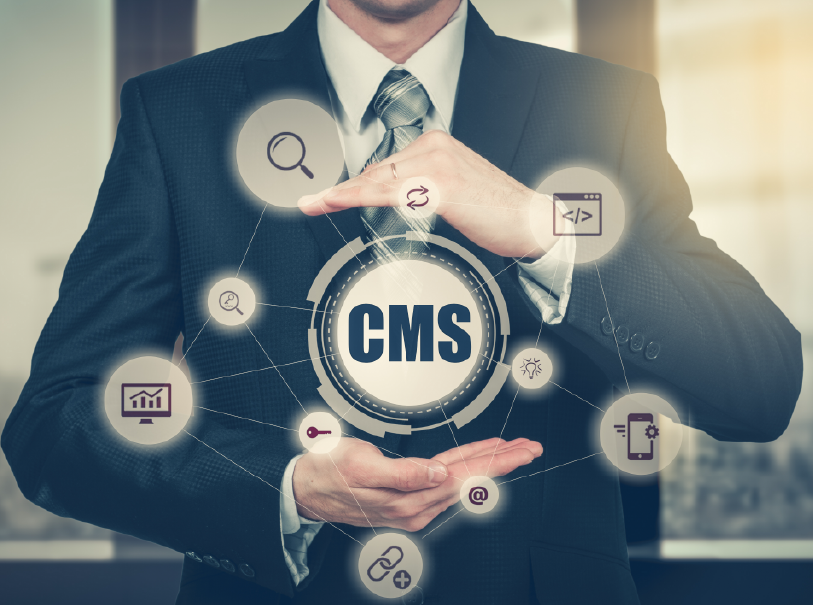Thinking ahead: Should you be using a headless CMS architecture?
Pros and cons of separating your CMS and user experiences
Feb. 27, 2020 | By: Burk Buechler, TEKsystems and Ryan Horner, One North

Headless content management systems (CMS)—a trend that has surfaced in response to “better, faster, cheaper” demands on marketing:
- Better – responsive design thinking and improved security
- Faster – rapid evolution in the front-end development space
- Cheaper – omnichannel distribution and syndication
As some smaller CMS providers have moved up the market, organizations have realized they can get similar functionality through those technologies as what they’re getting (and paying) for with enterprise systems. In response to this trend and the flexibility that CMS headless architecture allows, the major CMS platforms have responded, created or tweaked their architecture in a decoupled way.
Headless CMS architecture separates back-end content functions (like creation, management, and storage) from front-end functions (like presentation and delivery).
Today, marketers can pick a best-fit option for their needs: enterprise CMS, headless CMS—or a hybrid of both. No one model will work for all organizations. So which structure is the right one for your organization?
Advantages of headless CMS architecture
Today, CMOs are being tasked to do more than a marquee website. Instead of acquiring and managing a different tool and content for each channel, a headless architecture CMS model lets you enter content in one place, and have it disseminated to many different places: mobile apps, new sites, third parties. This lets marketers take advantage of the significant amount of transformation that’s happening in front-end technologies relative to back-end technologies. When a CMS is coupled in a monolithic architecture, you can’t innovate as quickly. Headless CMS architecture fixes this, allowing your martech stack to communicate and optimize with other marketing automation and technology. While monolithic systems are closed off, headless technologies admit they’re not going to be the only tool in the stack.
In industries with a precarious competitive landscape and real M&A possibilities, this type of architecture could be advantageous, as it aligns with that kind of disruption and change within organizations. If the content is good to go—you’ll just need to iterate a new front-end story.
Greater innovation on the front-end leads to a greater overall look and feel. More flexibility and freedom allows you to focus on content creation and management. Plus, it gives you more options to think outside a one marquee site mentality, trying to be all things to all audiences.
Hybrid headless CMS model
Enterprise CMS platforms offer deep insights from analytics that can power personalization efforts which tie directly to marketing outcomes and goals. However, these enterprise CMS providers are seeing things from a customer’s perspective: organizations have multiple monolithic systems and it’s creating all these data silos. A solution? Market leaders like Adobe and Sitecore have tweaked their architecture to give users an option of how to use their product in a headless way. You get the advantages of a headless model, including increased engagement and empowerment for the line of business.
Making the move to headless CMS
We’re not going to sugarcoat it, moving to a headless CMS will require a significant transformation effort: you are essentially rebuilding the front-end of your digital experience. Depending on the CMS you are on, it will likely require an upgrade. Partnering with a services provider that’s been through multiple CMS transformations will make the journey smoother and help reap tangible results quicker.
To do this effectively, you need a strong strategy in place with the right KPIs to align the disparate funnels and systems—brought together in a way that makes meaningful ROI for the business.
Should you move to a headless CMS?
Let’s go back to strategy: what is the business asking marketing to do? Does your tool and team allow you to meet and achieve that now and in the future?
If you’re happy with your current CMS and don’t have the resources (or the underlying business need) to go beyond your current .com site, then no—switching to a headless architecture doesn’t make sense.
How do you tell your marketing story? If you have a frequent need for topical sites for a particular purpose (e.g., events, product launches), or want to make things more consumable for mobile sites or third-party entities like Alexa and Google Home, then you could have a real business case for headless CMS architecture.
If you are satisfied with your enterprise CMS but are looking to a headless model to become more adaptable for future growth, consider the hybrid headless model that will give you flexibility and agility in architecture with less significant disruption in the here and now.
Burk Buechler is the managing director of digital solutions at TEKsystems. Burk believes in a business-first approach to digital transformation. A dynamic leader with over 25 years of experience across industries and sectors, ranging from healthcare and commercial to financial services and retail, Burk brings a distinctive blend of innovation, leadership and problem-solving expertise.
Ryan Horner is managing director of technology at One North, responsible for overseeing One North’s strategy related to technical applications, systems and client implementations. Ryan has more than 15 years of experience architecting, designing and managing technology teams. Ryan has a degree in computer science from Northwestern University and began his career at Accenture Technology Labs.